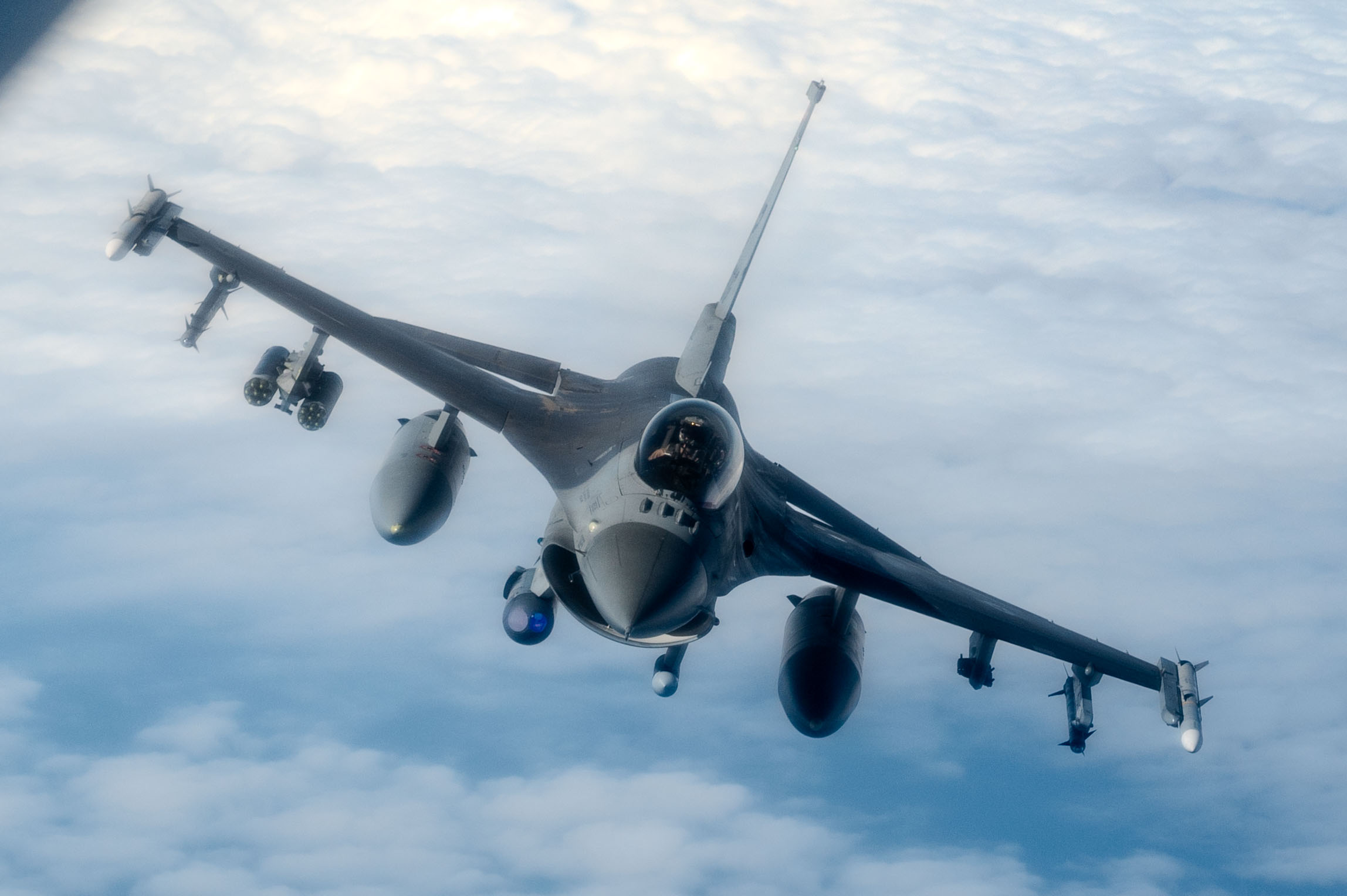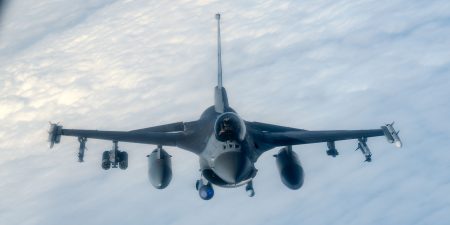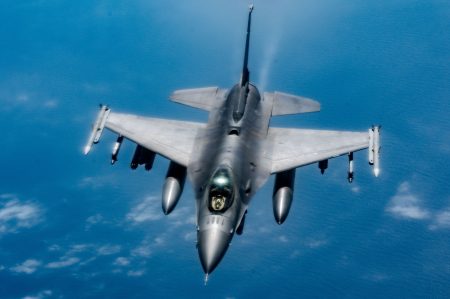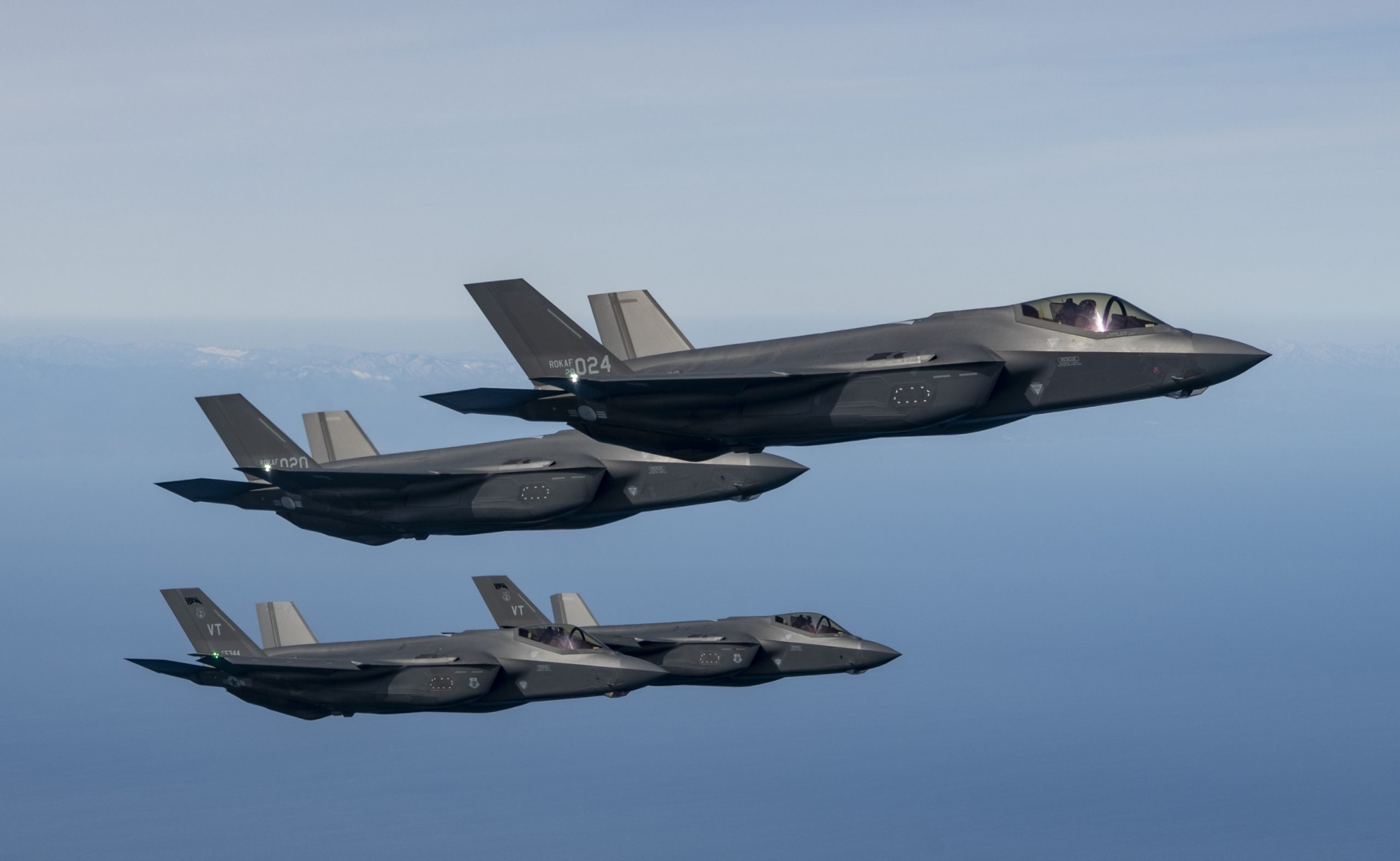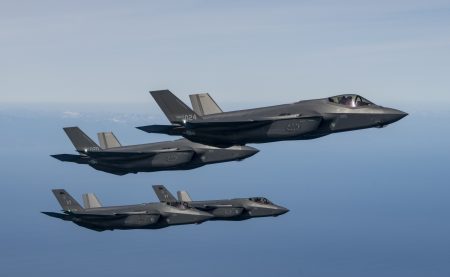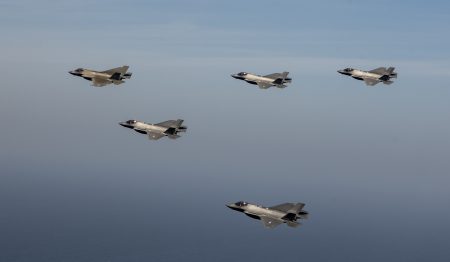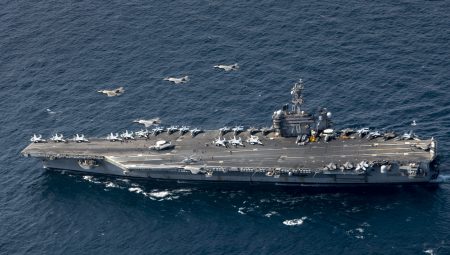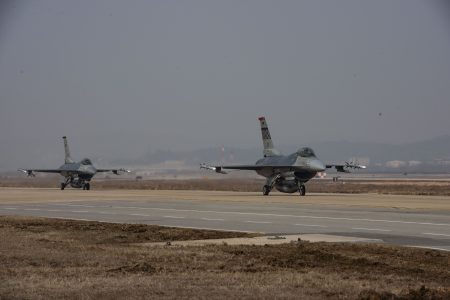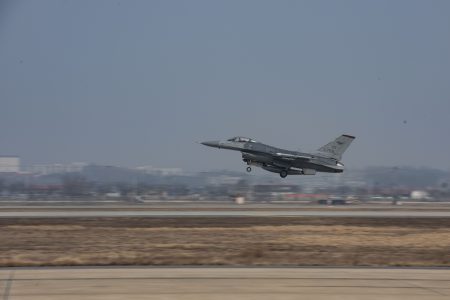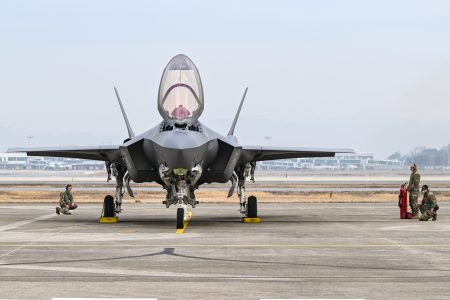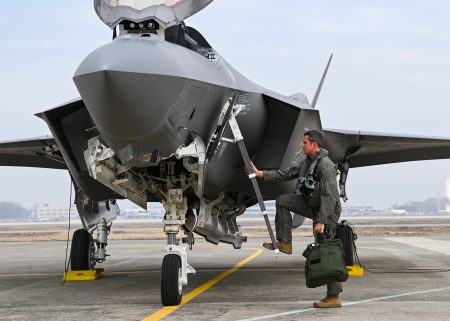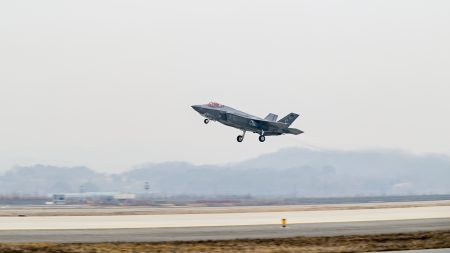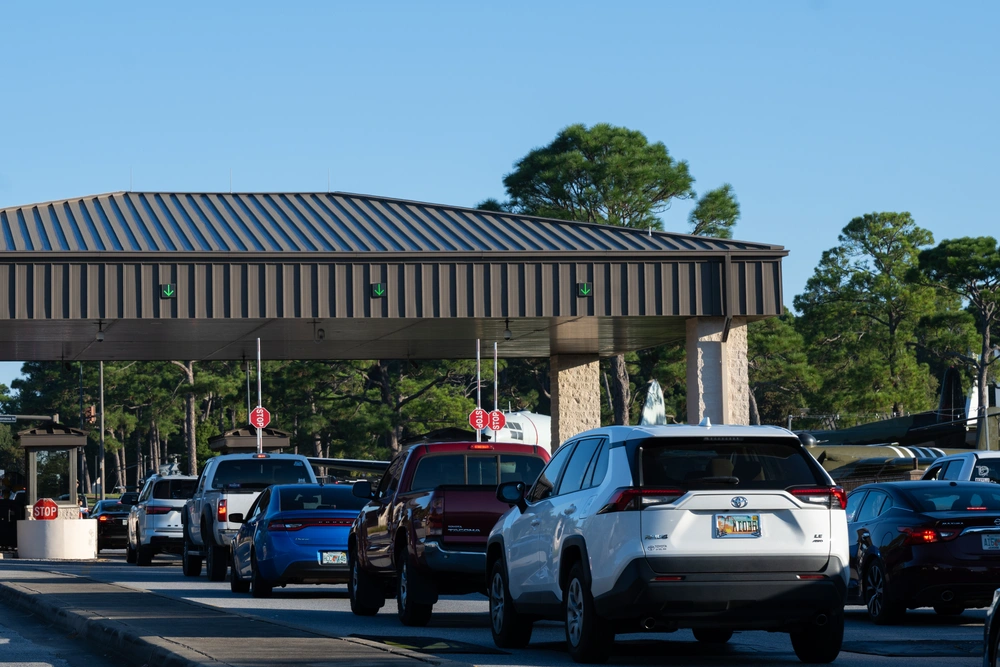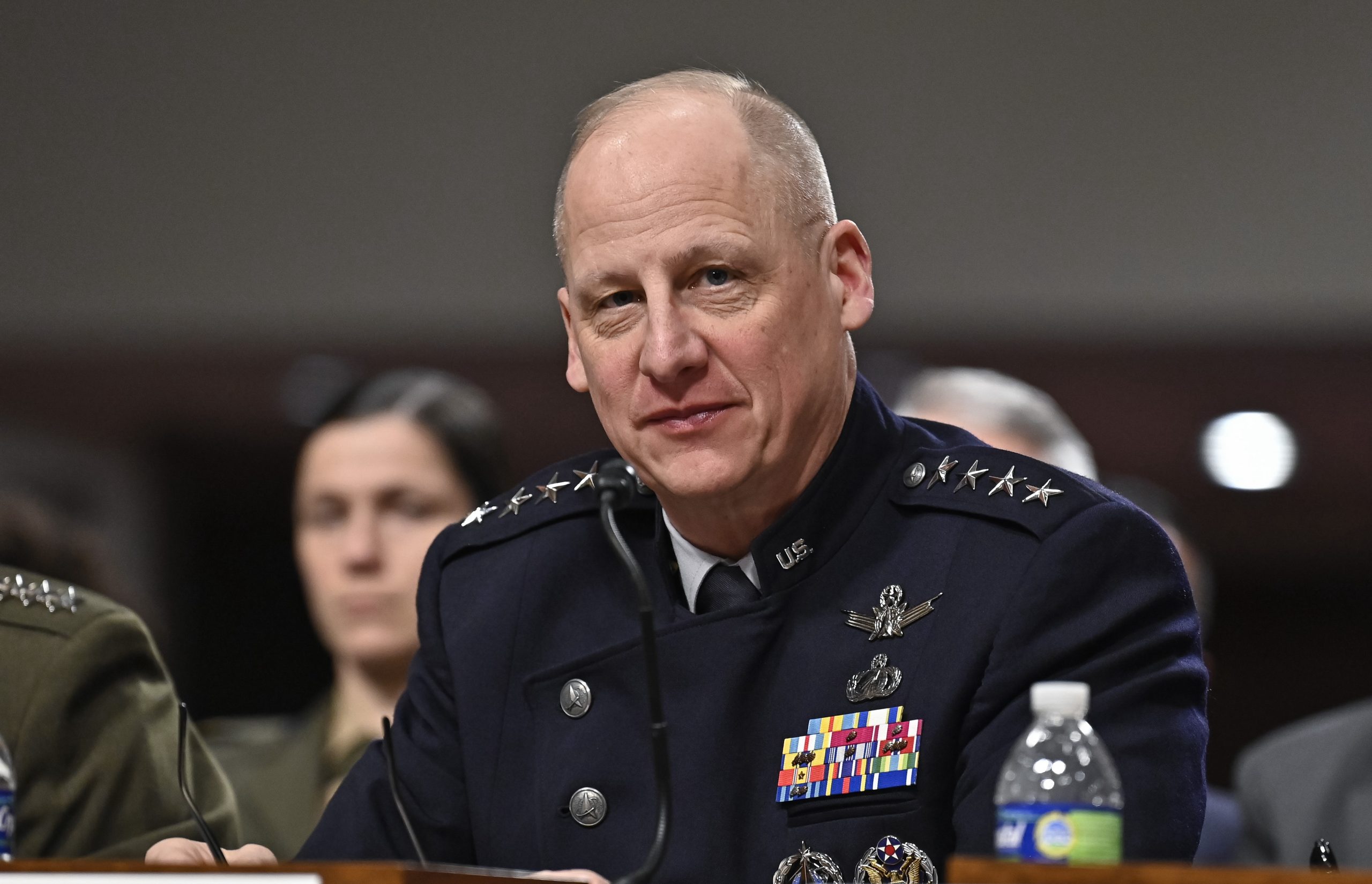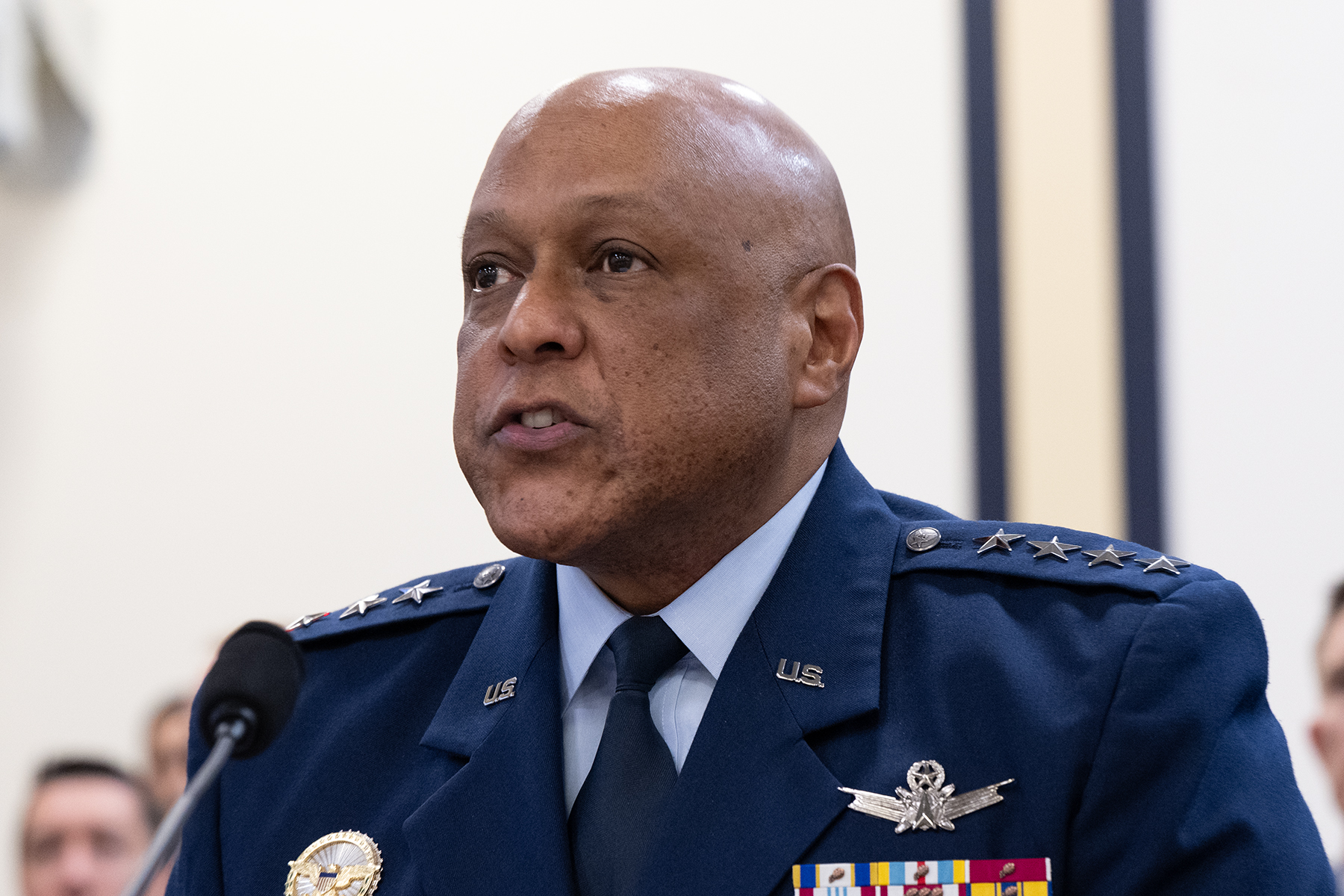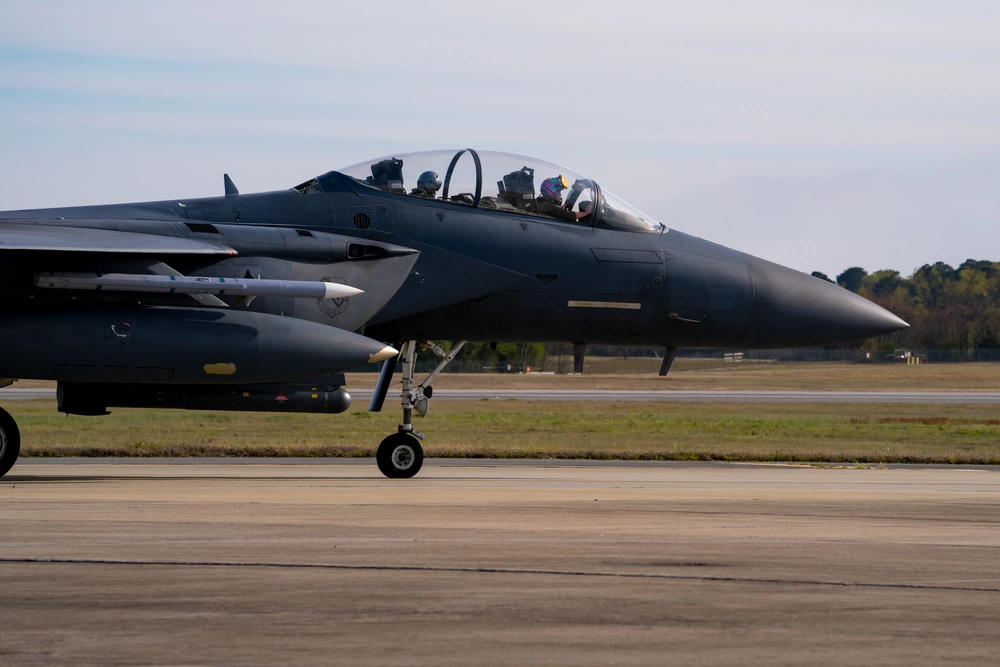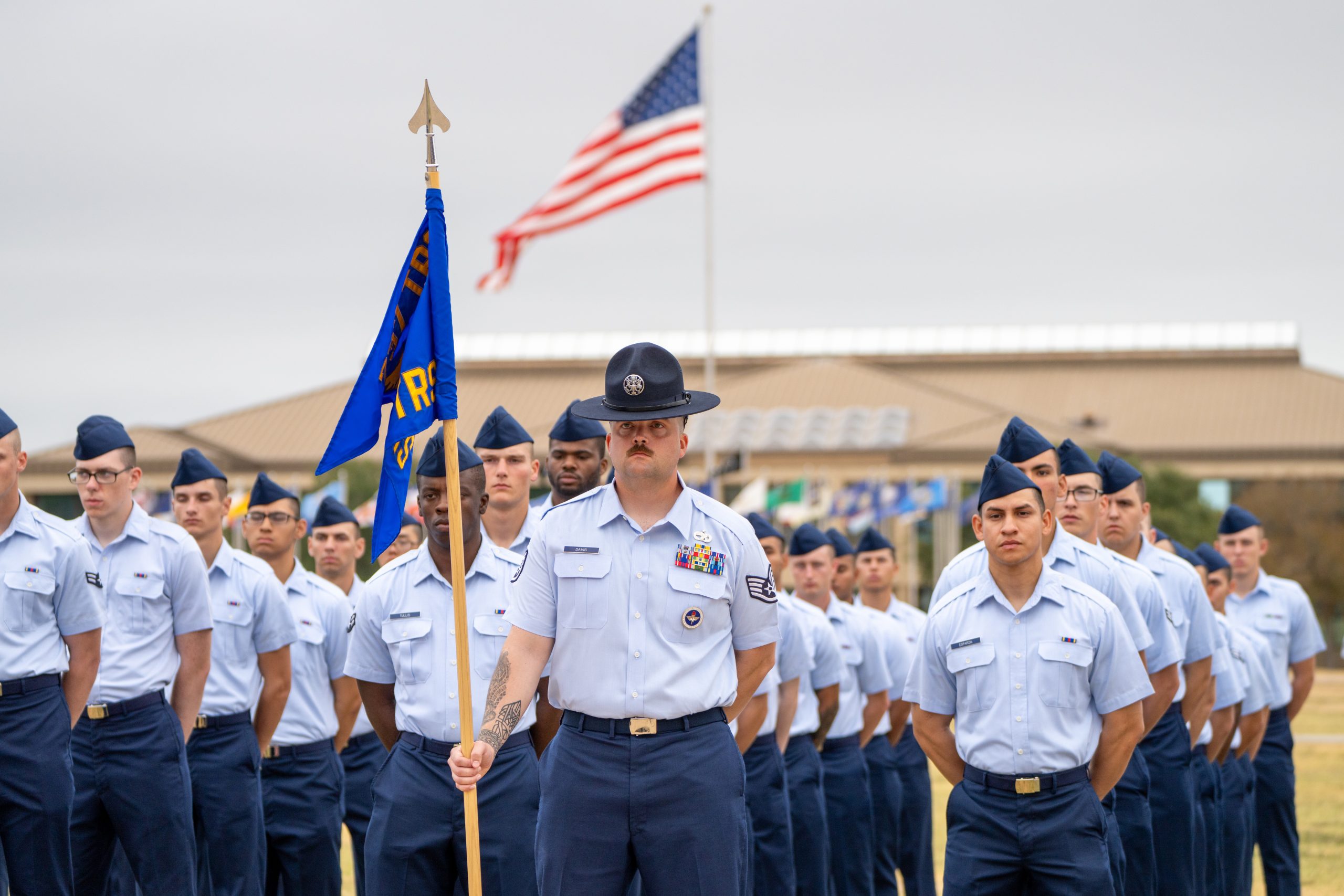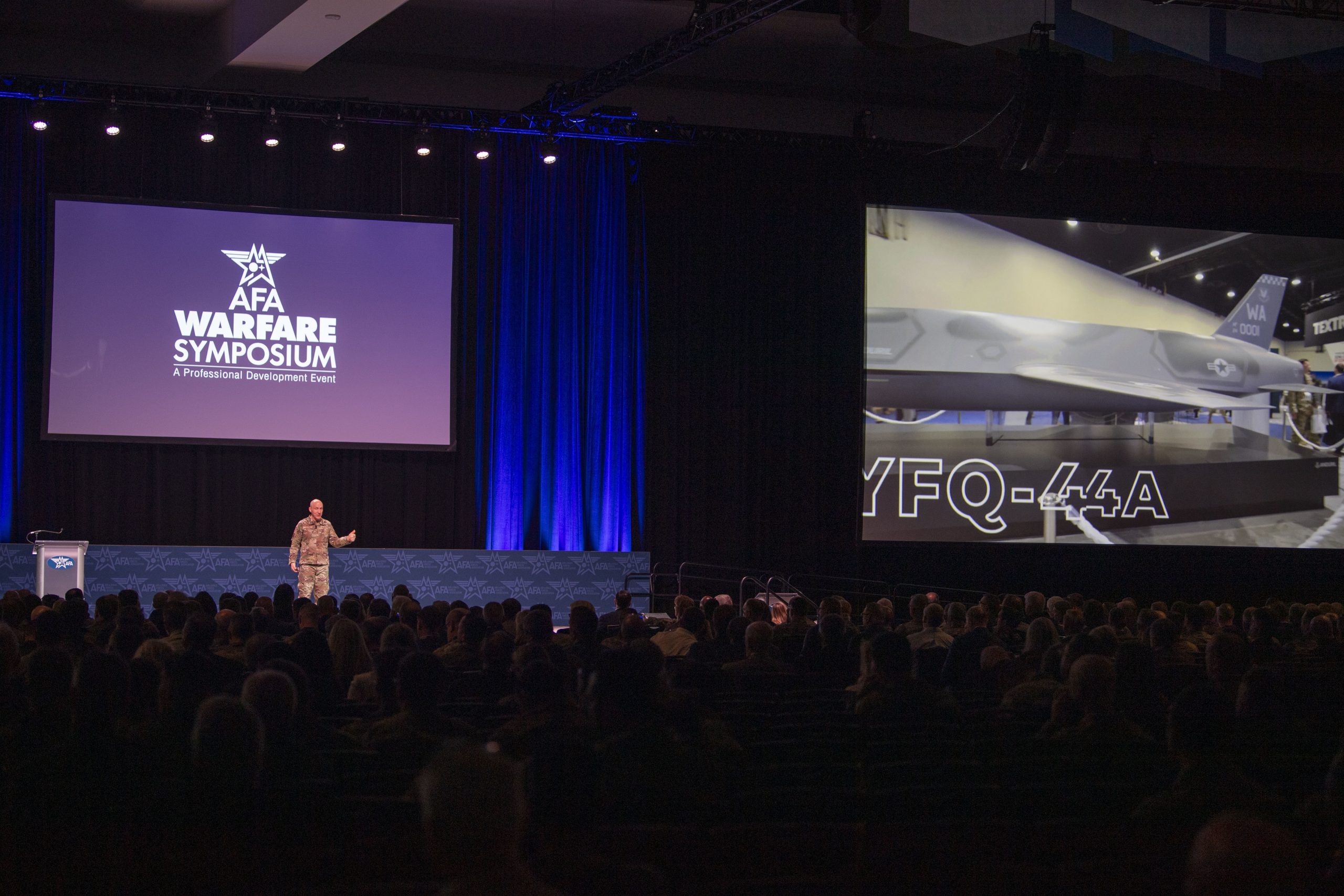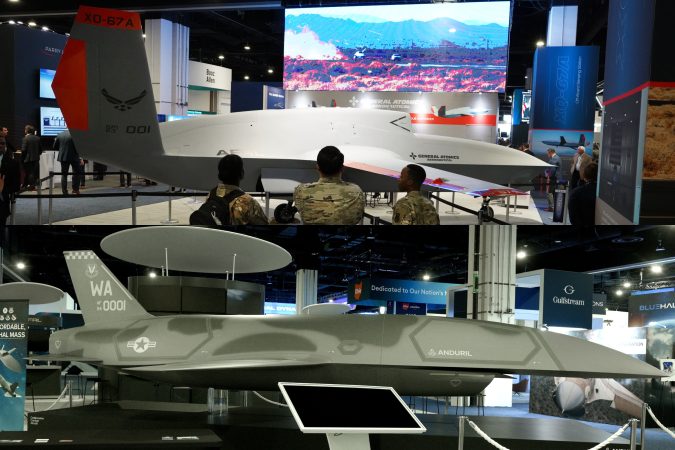U.S. Air Force fighters have been using laser-guided rockets to down Houthi drones that are attacking ships in the Red Sea, as the U.S. military seeks to drive down the cost of defeating cheap uncrewed systems, officials said.
The system is the AGR-20 Advanced Precision Kill Weapon System (APKWS)—Hydra-70 rockets that have been converted with a laser guidance kit to turn them into precision-guided munitions. It was designed for air-to-ground use but has now been used to shoot down drones, U.S. officials said.
Those rockets cost less than $40,000, the officials say, a significant advancement in driving down the cost of defeating the hundreds of drone attacks launched by the Houthis, as well as Iranian-aligned militants in Iraq and Syria. Iran has also launched drones at Israel that the Air Force has shot down, though the only confirmed use of rocket systems has been against the Houthis.
To shoot down drones, the Air Force has previously used AIM-120 AMRAAM medium-range radar-guided missiles, which cost roughly $1 million each, or short-range AIM-9 Sidewinders, which carry a price tag of hundreds of thousands of dollars depending on the variant. The most capable and latest model, which is often seen on Air Force fighters, is the AIM-9X, which costs around half a million dollars. The rockets offer a cheaper option in some situations.
On March 19, U.S. Central Command (CENTCOM) released a video on the social media site X of U.S. fighter aircraft downing Houthi one-way attack drones with APKWS rockets.
The video was of engagement by Air Force fighters of Houthi drones over the Red Sea within the past two days, a U.S. defense official told Air & Space Forces Magazine.
Air Force Chief of Staff Gen. David W. Allvin confirmed the service’s involvement in a post on X. “I love watching our Airmen at work!” Allvin wrote in response to the video released by CENTCOM. “The APKWS (~$35K each) is a fraction of the cost of missiles like the AMRAAM (~$1M each) or AIM-9 (~$500K each). More savings. More lethality. More Air Force.”
On March 16, Air Force fighters helped defeat a Houthi drone attack on Navy warships, though the systems that were used in that episode have not been disclosed.
President Donald Trump began a military campaign on March 15 against the Iranian-backed Houthis, who have waged war against shipping in the Gulf of Aden, the Red Sea, and the Bab El-Mandeb Strait for over a year, launching hundreds of attacks on shipping. The Houthis control much of Yemen.
“Tremendous damage has been inflicted upon the Houthi barbarians, and watch how it will get progressively worse,” Trump wrote on March 19 on his social media platform Truth Social. “It’s not even a fair fight, and never will be. They will be completely annihilated.”
Trump also wrote that Tehran was still sending military support to Yemen, though less than in the past, and urged it to stop immediately.
U.S. forces have launched several large-scale attacks on Houthi facilities during that time, including under the Biden administration. But the Trump administration has expanded the target set to include Houthi leaders and is involved in what appears to be open-ended operations.
The aircraft carrier USS Harry S. Truman, which is in the Red Sea, has launched airstrikes. The U.S. has also used Tomahawk land attack cruise missiles launched by nearby U.S. Navy ships in the Truman’s carrier strike group.
The U.S. military is expected to send additional aircraft to the Middle East, U.S. officials previously told Air & Space Forces Magazine.
Officials declined to specify which type of fighter shot down the drones with the rockets in the latest engagement, but U.S. Air Force F-16s have been observed carrying rocket pods in recent months, including in the Middle East. The War Zone reported in January that the system had been used to engage drones in the Middle East.
Some Air Force F-16s in the region have been seen fitted with LITENING infrared targeting pods and one or two Hydra rocket pods, as well as AMRAAMs and AIM-9s. To guide an APKWS rocket, the target must be laser-designated or “lazed,” unlike more expensive “fire-and-forget” missiles. This means air-to-air use of the rocket pods is most suited to defeating slow-flying targets such as one-way attack drones.
The Air Force first demonstrated the ability to use APKWS rockets in an air-to-air role in 2019 in what officials said at the time was a “proof of concept,” but the system had not been used operationally until last year.
The Houthis have launched missiles and drones at U.S. ships more than 170 times and commercial vessels more than 145 times since they began their campaign in late 2023, Pentagon spokesman Sean Parnell said on March 17.
The Houthis have said they have targeted the Truman and other Navy ships in response to the latest U.S. military action, but the carrier was never in danger.
“The Houthis claim to have tried to attack the Harry S. Truman. Quite frankly, it’s hard to tell. Because while we’re executing precision strikes, they missed by over 100 miles,” Air Force Lt. Gen. Alexus G. Grynkewich, Director of Operations for the Joint Staff, told reporters. “There’s also been a number of other attempts to interdict vessels in the Red Sea using UAVs and some cruise missiles as well. All of those have been easily defeated by our fighter aircraft that are there.”
The Houthis have vowed to retaliate against the U.S. for its attacks and to continue to attack shipping. The group, which was designated as a foreign terrorist organization by the State Department earlier this month, has said its actions are motivated by Israel’s war in Gaza against Hamas.
The Houthis have launched drones and missiles at Israel, though most of the commercial ships targeted have no affiliation with Israel. The Houthis resumed their attacks on shipping earlier this month after the collapse of a ceasefire deal between Israel and Hamas.
U.S. strikes “will continue in the coming days until we achieve the president’s objectives,” Grynkewich said.
